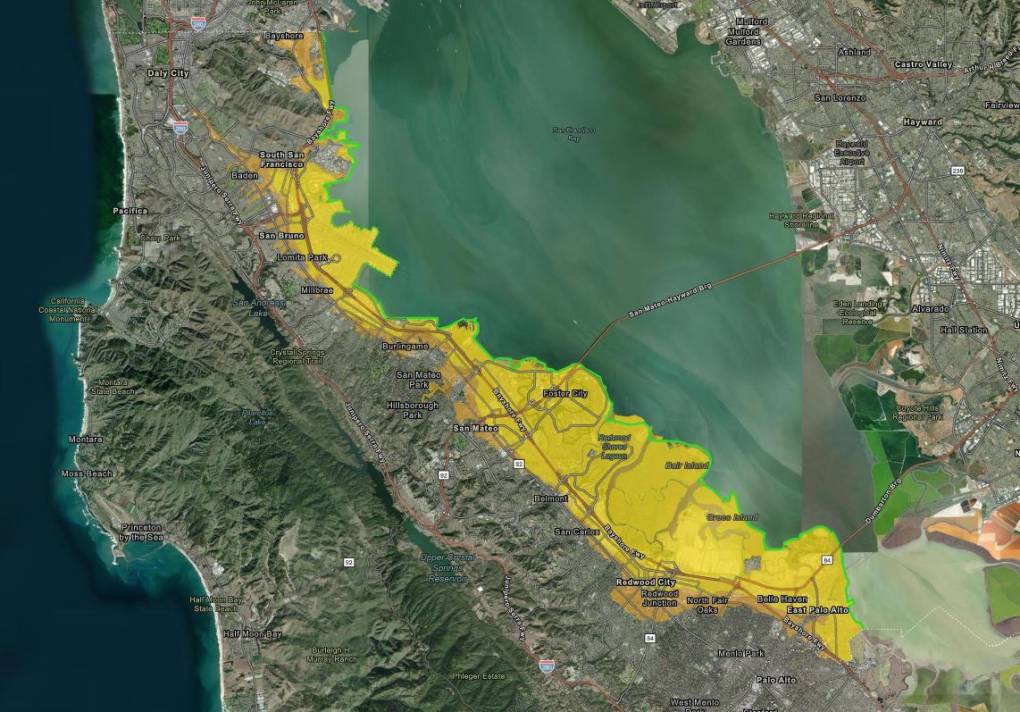The protection standards attempt to safeguard future developments from a far wetter future because of the effects of climate change brought on by humans burning fossil fuels globally.
The new guidance could affect developments between Highway 101 and the shoreline in Brisbane, Burlingame, East Palo Alto, Menlo Park, Redwood City and South San Francisco, which are currently in planning. This is an opportunity for developers to adapt their plans for the changing climate, said Materman.
“These developments that are coming in now or in the next few years are going to lock in what our shoreline looks like,” he said.
The Bay Area will need to spend $110 billion dollars to adapt to rising tides (PDF), according to a new economic study from the Bay Conservation and Development Commission and the Metropolitan Transportation Commission.
The agencies estimate the revenue currently available to pay for these adaptation projects at just $5 billion.
San Mateo plans steps out ahead of California
San Mateo County’s climate scenario goes beyond state recommendations and what most bay agencies are adapting for. Materman said the county should overprepare for climate change, as it’s one of the most at risk in the state from rising tides.
“I’d love to be proven wrong and for somebody to say that OneShoreline protected us too much,” he said. “Let’s provide too much protection rather than under-protecting people when we really see the impacts of climate change today.”
The guidance also outlines planning tips for dealing with contaminated sites near the edge of the bay, liquefaction risk from earthquakes and underground structures like sewers. It recommends that planners consider future storms — expected to become 37% wetter by the end of the century, according to Bay Area climate scientists — by making sure that stormwater infrastructure can handle more significant flows.
The recommendations come with risk maps of sea and groundwater rise due to climate change for planners to understand how the two water sources may inundate communities and businesses near the lip of the bay.
 A screen grab of the county’s sea level rise risk maps.
A screen grab of the county’s sea level rise risk maps.
Materman said anyone who lives or commutes within San Mateo County should care about the risks from climate flooding because a large portion of the infrastructure that supports its bustling cities is along the waterfront.
“Let’s use the knowledge that we have about climate change and the bay to make better decisions, and so we don’t lock in these very expensive, difficult problems when we can try to do something about it preemptively,” he said.




















